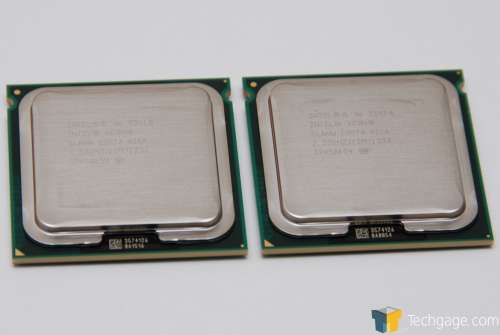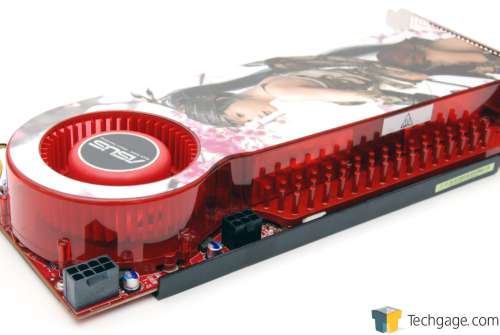- Qualcomm Launches Snapdragon 4 Gen 2 Mobile Platform
- AMD Launches Ryzen PRO 7000 Series Mobile & Desktop Platform
- Intel Launches Sleek Single-Slot Arc Pro A60 Workstation Graphics Card
- NVIDIA Announces Latest Ada Lovelace Additions: GeForce RTX 4060 Ti & RTX 4060
- Maxon Redshift With AMD Radeon GPU Rendering Support Now Available
Building an Affordable “Skulltrail” System
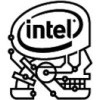
Intel’s new dual-socket enthusiast platform is in every sense impressive, but due to the price of the recommended CPUs, owning one is a dream for many. We’re taking a look at a few ways to build your very own full-featured 8-core “Skulltrail” machine for a price that’s a lot easier to manage.
Page 2 – Choosing the Right Components
For most people who visit Techgage, building a computer is one of the easiest things in the world. Though it’s looked upon as being complicated by the novice, we all know that once you build your first machine, it becomes clear just how easy the process actually was.
Two of the most important decisions when building any new PC is picking out the chassis and PSU. For the most part, gamers care about having a chassis that looks good and represents their gamer style, while the PSU is chosen due to it’s high wattage and ability to handle all of the components that are chucked in there.
That’s where Skulltrail is a little different however. Such decisions need to be taken a little more carefully, and that’s what we will tackle here today. On this page and the next, we will be taking a quick look at choosing the right components and leave nothing out. Hopefully by the end, you will better understand exactly what it is you need to build a great Skulltrail machine.
Processor
As mentioned on the last page, for our test-build we chose to use the Xeon E5410, and in truth, it was an easy decision. This 45nm processor offers all of what we love about the refined architecture, including 12MB of L2 cache, the SSE4 instruction set, a 1333FSB and a nice clock speed. But most importantly, the fact that this CPU retails for just under $300 was the deal-breaker. At that point, there is no real point in going lower (especially if overclocking is a goal) and going higher would bring us over our potential $2,500 goal.
For those who want a little boost without overclocking, however, the Xeon E5420, with 2.5GHz clock speeds, would also be a good choice. It retails for around $375 from many popular retailers.
One thing to take into consideration with any processor purchase is the overclocking-ability, which on our E5410 will prove somewhat difficult due to the 7x multiplier. The E5420 ups that multiplier to 7.5x, which should easily result in a 3.0GHz overclock. On the E5410, that goal didn’t happen for us, however. For huge overclocks to be seen, there is little choice but to use the QX9775, which have been known to hit 4.0GHz with relative ease.
Chassis
Intel’s Skulltrail board, the D5400XS, is of the eATX form-factor, meaning that most chassis’ will not be up to the task of wrapping its aluminum frame around it. So when choosing a case, you need to make sure it fully supports eATX. These cases can also be called “Full Towers”, and we’ve taken a look at numerous models in the past that are more than up to the task.
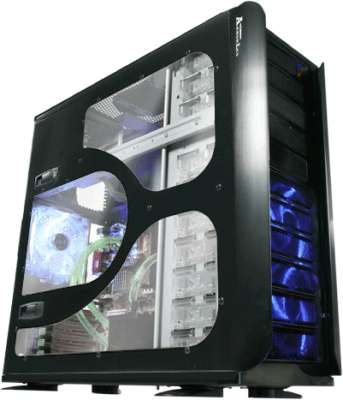
For our Skulltrail preview, I used the Thermaltake Armor chassis and it worked well. But I’ve since moved all the components into a SilverStone TJ10 and can already state that I’d recommend that case first. It’s spacious, convenient and has a sleek look. It’s fantastic. The problem, of course, is the price.
SilverStone’s TJ10, for example, retails for $300 on average, while the Thermaltake Armor retails for a much more affordable $150. So even though the TJ10 is the preferred chassis in my books, it’s hard to look away from the Armor. Since we are trying to build a budget system here, we need to go with what’s practical.
Power Supply
Where Skulltrail is concerned, choosing the right chassis is simple. There are dozens of quality full towers that would perfectly suit the platform, so that decision overall is no problem. Power supplies are a different story however. But again, the decision here will ride on what you want from the system.
The D5400XS “requires” dual 8-Pin +12V motherboard connections for overclocking. I used quotes because I didn’t test overclocking with a single connector and don’t plan on it. So it’s with that, that dual 8-Pin connectors are highly recommended if overclocking is in the cards. That makes our decision simple, right? Hardly! After a long search, I managed to find three such PSUs, and not one is “affordable.”
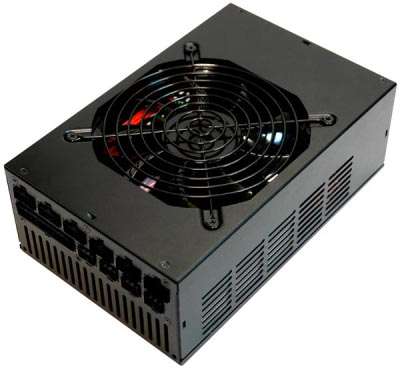
The PSU I chose to use is SilverStone’s DA1200, a 1200W offering that retails for $380. I’m no PSU guru and will never claim to be, but I was recommended this PSU by those who know, and am pleased to have it in our Skulltrail rig. The other PSU’s available are both from PCP&C, the 1000W Turbo-Cool 1KW-SR and the 1200W T12W. The former is priced at $450, while the other is priced at $550. So in the end, where overclocking is concerned, SilverStone’s offering is the logical choice.
If absolutely no overclocking is planned, then choosing a standard, but high-end, offering should suffice. It’s very important to make sure your choice is a good one, however. Read up reviews where proper load-testers are used and make sure there is sufficient amperage. An example of one great supply is Antec’s Quattro 1000W, which I have used for Skulltrail and had no problem. It does, however, have problem with certain NVIDIA 8800 cards, so I can’t outright recommend it. It’s too bad though, as it’s a very stable supply.
Graphic Cards
This is where the fun begins. Because Intel includes an NVIDIA chipset on the D5400XS motherboard, it’s SLI-ready right out of the box. This is something completely new for a non-NVIDIA board, so I applaud Intel for making it happen. For ATI fans, Crossfire support is of course supported as well.
So with the possibility of a single or dual-GPU rig (tri/quad GPU support not possible, and might not be in the future on this board), the options are fantastic. Given that our build will hover around the $2,500 mark, going with a low-end graphics card would be pointless. If you are contemplating a Skulltrail machine, chances are good that gaming is one of your plans.
There are so many choices here that would be great. SLI’ing two 8800GTs would offer fantastic performance, all for $480~, or bumping up to the even faster GTS 512 SLI would require another $100. Or how about the brand-new ATI HD 3870 X2? It retails for around $450 and offers two GPUs on a single card, allowing high resolutions on all your games, and AA to boot. Either choice would be a good one.
For the budget gamer who wants 8-Cores more than a smoking gaming machine, a single GPU would fare well… the great choice being the 8800GT. For $240, you can get the best mid-range card on the market, and still play most of your games at high resolutions – even 2560×1600 if you have a capable monitor. Personally, for the sake of building a truly awesome machine, my goal would be to include dual 8800GTs.
On the next page, I’ll take care of other smaller installation considerations and then finally get into the sample machine configurations.
Support our efforts! With ad revenue at an all-time low for written websites, we're relying more than ever on reader support to help us continue putting so much effort into this type of content. You can support us by becoming a Patron, or by using our Amazon shopping affiliate links listed through our articles. Thanks for your support!




